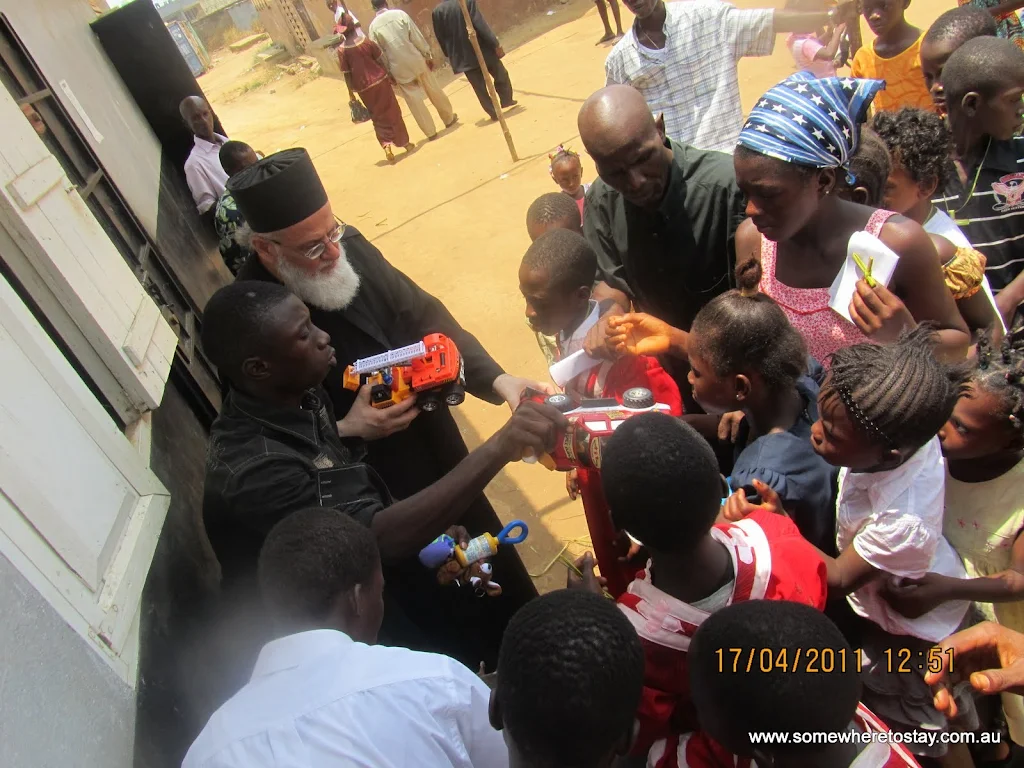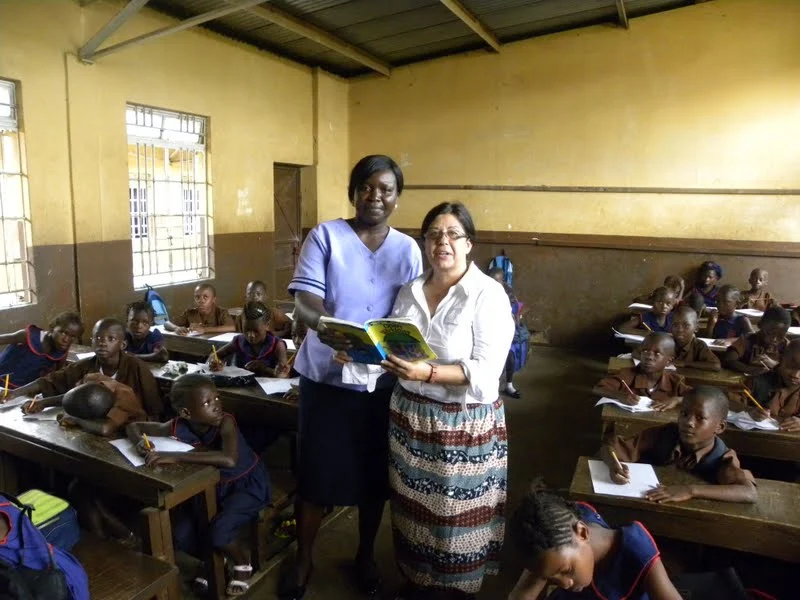The Eastern Orthodox Church’s missionary tradition is often unknown in Western circles, despite the fact that she has many exemplary missionary figures who reflected distinct missionary characteristics from their contemporary Western counterparts throughout her 2000 year tradition. The Orthodox Church sees the missionary legacy of the apostolic Church continuing in the fourth century through such stalwart missionaries as Gregory the Illuminator of Armenia, Nina of Georgia, Frumentios of Ethiopia, Hillarion of Gaza, and the Syrian monk Alexander, who organized a group of 150 of his most able monks to evangelize the lands around the Euphrates River. In fact, from the 4th through 6th centuries, the Byzantine Church actively evangelized the many pagans within the Empire, while also sending out missionaries to Syria, Mesopotamia, Persia, Armenia, Phoenicia, Arabia, Noubia, Ethiopia, India, Mongolia, and China, as well as to the Goths, Huns and Iberians.
The most famous of the Byzantine missionaries were the brothers Cyril and Methodius (9th century), who evangelized the Slavic peoples of Moravia. Although Frankish missionaries had been working in this area for 50 years prior to their arrival, Cyril and Methodius were the first to create a Slavic alphabet and translate Holy Scriptures, Divine Services and writings of the Church Fathers into the language of the people. Despite fierce opposition from their Frankish counterparts, they received the blessing for their methods and work from the Churches in Rome and Constantinople alike. They labored in this region for 20 years, leaving behind more than 200 trained, indigenous clergy. Although little trace of their work survived in the regions of Moravia during the years of Frankish persecution following their deaths, their disciples carried their legacy into the southern Slavic lands, doing evangelistic work and spreading the Gospel in the lands of Serbia, Bulgaria, Moldavia, and eventually Russ.

With the fall of Constantinople in 1453, a period of darkness spread over the Orthodox lands of the Balkans and the Middle East. Islamic law forbade any proclamation of the gospel to those outside the Christian faith, while conversion to Islam was greatly encouraged and sometimes forced upon the subjugated Christians. During these 400 plus years of oppression and decline, the suffering Orthodox Churches in the Balkans and the Middle East were unable to participate in much missionary activity. One unique exception was that of Kosmas of Aitolos, the most famous modern Greek missionary. Kosmas was an 18th century monk from Mt. Athos, who left his monastery after 19 years to re-evangelize hundreds of villages in modern-day northern Greece and Albania. His 20 year missionary effort helped to create more than 200 schools, with the main goal of wanted the future generation of children to be educated and able to read Holy Scriptures and writings of the Church Fathers. He continued his missionary efforts until his martyrdom in 1779.

While the Orthodox Churches in the Balkans and the Middle East struggled during these dark ages, the Orthodox Church in Russia actively began participating in significant missionary outreach throughout the lands north and east of Kiev from the 14th century onwards. The most famous missionary of this era was Stephen of Perm, the evangelizer of the Zyrian people of northwestern Siberia from 1378-1396. He followed the missionary model of Cyril and Methodius, creating an alphabet with ancient Zyrian ruins and translating Holy Scriptures and liturgical services for the people, training and ordaining indigenous clergy, and establishing a strong, local Church.

From the 16th to 18th centuries, the Russian Church’s missionary outreach struggled under hostile state policies, yet still produced certain noteworthy exceptions. In the mid 16th century, Bishop Gurii evangelized the peoples of Kazan and helped convert thousands of Muslims. Centuries later, the famous Academy of Kazan would become an important center of missionary and linguistic research and training. Other noteworthy missionaries of this period were the layman Trifon of Novgorod, who proclaimed the Gospel to the Lapp people, and Bishop Filotei of Tobolsk, who evangelized and helped convert 40,000 indigenous peoples in various parts of Siberia. In 1714, the first official Orthodox mission began in Peking.

Missionary activity reached its apex in the 19th century, when a great spiritual renewal swept across Russia, bringing about a renewed apostolic zeal. Since most of the missions of this period took place among the numerous ethno-linguistic groups within the vast boundaries of the Russian Empire, the amazing achievements of so many of these outstanding missionaries drew little notice outside of Orthodox circles.

The philologist Makarius Glukarev spent 14 years in the rugged northern Siberian Altai mountains from 1829-1843, proclaimed the Gospel among these warrior nomads and semi-nomads. Although the numerical fruit of his work was limited, he set an example and paved the way for the following generation of missionaries. By the end of the 19th century, 25,000 out of the 40,000 nomads became Christian. During his years as a missionary, he published a significant book entitled Thoughts on the Methods to be followed for a Successful Dissemination of the Faith among Mohammedans, Jews, and Pagans in the Russian Empire. He became an important catalyst for Russian missions by re-establishing a working theory of missiology within his Church.
The most famous of the Russian missionary efforts began with a group of 10 monks from the Valaam monastery going to Alaska in 1792. Although the group witnessed promising numerical success in the early years, various tragedies and deaths reduced the original missionary group to one simple lay monk, Herman. This monk, however, lived a holy life in this rugged land, offering a witness of love to the indigenous peoples, and often defending them from the cruel Russian traders and exploiters. Although Herman never translated any materials, nor partook in active missionary outreach, he represented the “passive” model of missions, drawing people to Christ through his holy example. He is revered today as the father of Orthodoxy in Alaska today.

The greatest of all Russian missionaries was probably Innocent (John) Veniaminov. His adventurous and outstanding 45 year ministry in Alaska and Eastern Siberia represented the best of the Orthodox missionary tradition. This married priest began his apostolic efforts in 1823 working among the Fox-Aleut tribes of Alaska. During his ten years among this tribe, he created an alphabet and translated parts of Holy Scripture and Divine Services into their language, as well as trained numerous indigenous leaders. From 1834-1839, he began work among the neighboring Thlinglit peoples, once again creating a new writing system and translating parts of Holy Scriptures and liturgical services into their language. After the death of his wife in 1841, Innocent was elevated as a missionary bishop and served in newly created dioceses in the Alaskan and Eastern Siberian lands for the next 27 years. He traveled thousands of miles yearly by primitive means in order to reach the furthest regions of his dioceses. His ministry culminated in his election as Metropolitan of Moscow in 1868, in which capacity he served for the last 10 years of his life. During this time he established the Russian Orthodox Mission Society, whose goal was to prepare, support and send out missionaries, raise missionary awareness among local churches, and create materials for various missions. At its height, the Mission Society had more than 16,000 members within 55 diocesan committees. It sent out and supported hundreds of missionaries throughout the vast lands of Siberia and the eastern end of the Russian Empire, as well as to Alaska, Japan, China, and Korea. It also published more than 2 million copies of hundreds of translations into 20 languages for various missions. This society continued its work until the Bolshevik Revolution in 1917.
Another exemplary Russian missionary was Nicholas Kasatkin, whose apostolic effort took place in Japan from 1861-1912. He entered Japan when the country was still considered one of the most xenophobic and unevangelized countries in the world. At the end of his 50 year ministry, the Orthodox Church of Japan claimed more than 33,000 Christians within 266 communities, and included 43 clergymen and 121 lay preachers. Another part of Nicholas’ legacy was the translation into Japanese of the New Testament and most of the Old Testament, as well as most of the liturgical services of the Church.

The Bolshevik Revolution of 1917 abruptly disrupted all missionary activity coming out of Russia, while enslaving Orthodoxy’s largest and most active Church. The Russian Church struggled to survive in the 20th century while the Orthodox Churches in the Balkans desperately tried to recover their authentic missionary heritage after centuries of oppressive Ottoman rule. These circumstances kept the Orthodox Church inactive in external missions during the first half of the 20th century.

In the late 1950s, a missionary awakening began within the international Orthodox Youth Movement Syndesmos. Anastasios Yannoulatos, a young Greek theologian led this revival, establishing a missionary magazine entitled Poreuthentes (Go Forth) published in Greek and English. For a decade (1960-1970), this magazine tried to reawaken the Church of Greece and the international Orthodox community to her missionary responsibility. Yannoulatos also established the inter-Orthodox mission center Poreuthentes in Athens in 1960, hoping that the center would train and send out cross-cultural missionaries. After a serious bout of malaria ended Yannoulatos’ first missionary endeavors in East Africa in the 1960s, he pursued further studies and became a Professor of World Religions at the University of Athens from 1972-1991. From this position he taught courses on missiology, and made a significant contribution to the Orthodox world, as well as within the ecumenical world, with his original missiological writings. He founded and edited the official mission magazine of the Church of Greece Panta ta Ethne (All Nations) in 1980.
Not content to be only a missiologist, Yannoulatos became the greatest modern example of an Orthodox missionary with his service as Acting Archbishop of East Africa (1981-1991) and Archbishop of Albania (1991-present). In East Africa, Archbishop Anastasios followed the ancient Orthodox missionary tradition by fortifying the indigenous Orthodox Church in Kenya, Uganda and Tanzania by opening the first Orthodox seminary in Africa and training and ordaining 62 indigenous clergy and 42 specialized catechists. He also oversaw the translation of liturgical services in seven languages, while establishing 67 new churches and building numerous medical clinics and primary schools.

Archbishop Anastasios began his missionary efforts in Albania in 1991 at the age of 61. He organized a holistic outreach in evangelism, education, healthcare, development, culture and environment. His first effort was to establish a seminary, which has trained and ordained more than 140 clergymen over the past 20 years. He has re-established the Holy Synod of Bishops (including three new Albanian bishops) and returned the Church of Albania to official autocephalous status within the worldwide Orthodox family. He has built 100 new churches, and rebuilt or repaired another 250 churches. His missionary and humanitarian efforts have been recognized throughout the Orthodox world and beyond, solidifying his position as the leading contemporary voice of Orthodox missions.


Through the work and influence of Archbishop Anastasios, numerous other mission societies have begun in Greece. His work has also influenced the missionary efforts especially in the Orthodox Church in Finland, as well as the Orthodox Churches in America.
One of the most visionary mission center today in the Orthodox world is the Orthodox Christian Mission Center in St. Augustine, Florida, USA. This center was established in 1987, and now sends out long-term missionaries and 15 short-term mission teams every year, supports the indigenous work of missions in 20 countries, educates students from mission countries, and helps raise the missionary consciousness of the Orthodox Churches in America.
Bibliography: G. Afonsky, A History of the Orthodox Church in Alaska (1794-1917). (Kodiak, AL, 1977) * J. Bria, ed., Martyria/Mission: The Witness of the Orthodox Churches Today. (Geneva, 1986) * J. Forrest, Resurrection of the Church in Albania: Voices of Orthodox Christians. (Geneva, 2002) * P. Garrett, St. Innocent, Apostle to America (Crestwood, NY, 1979) * M. Oleksa, Alaskan Missionary Spirituality. (New York, 1987), Orthodox Alaska. (Crestwood, NY, 1993) * G. Lemopoulos, Your Will Be Done, Orthodoxy in Mission, (Geneva, 1989) * G. Liacopoulos, Lights to the World. (Minneapolis) * J. Stamoolis, Eastern Orthodox Mission Theology Today (Maryknoll, NY, 1986) * A. Tachiaos, Cyril and Methodios of Thessalonica (Crestwood, NY, 2002) * L. Veronis Missionaries, Monks and Martyrs: Making Disciples of All Nations (Minneapolis, 1994) * L. Veronis Go Forth: Stories of Missions and Resurrection in Albania* A. Yannoulatos Facing the World: Orthodox Christian Essays on Global Concerns (Crestwood, NY, 2003)* A. Yannoulatos Missions: Footsteps in Christ’s Way (Brookline, MA 2010).
http://pemptousia.com/
No comments:
Post a Comment